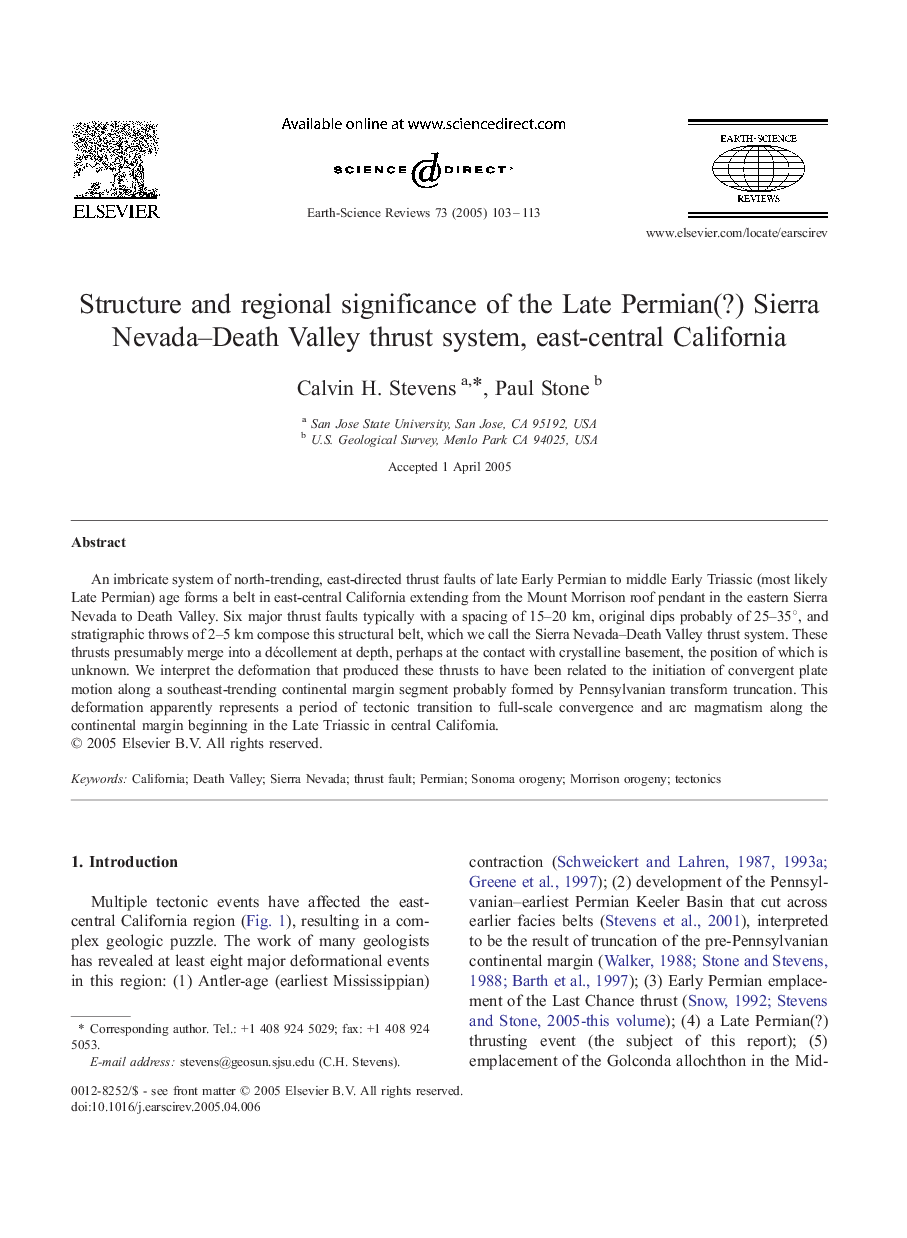| Article ID | Journal | Published Year | Pages | File Type |
|---|---|---|---|---|
| 9534279 | Earth-Science Reviews | 2005 | 11 Pages |
Abstract
An imbricate system of north-trending, east-directed thrust faults of late Early Permian to middle Early Triassic (most likely Late Permian) age forms a belt in east-central California extending from the Mount Morrison roof pendant in the eastern Sierra Nevada to Death Valley. Six major thrust faults typically with a spacing of 15-20 km, original dips probably of 25-35°, and stratigraphic throws of 2-5 km compose this structural belt, which we call the Sierra Nevada-Death Valley thrust system. These thrusts presumably merge into a décollement at depth, perhaps at the contact with crystalline basement, the position of which is unknown. We interpret the deformation that produced these thrusts to have been related to the initiation of convergent plate motion along a southeast-trending continental margin segment probably formed by Pennsylvanian transform truncation. This deformation apparently represents a period of tectonic transition to full-scale convergence and arc magmatism along the continental margin beginning in the Late Triassic in central California.
Related Topics
Physical Sciences and Engineering
Earth and Planetary Sciences
Geology
Authors
Calvin H. Stevens, Paul Stone,
